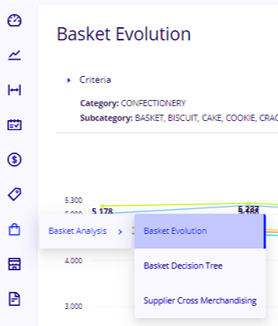
🎓 Definition
Penetration is a measure of brand or category popularity. It is defined as the number of shoppers who buy a specific brand or a category of product at least once in a given period, divided by the size of the total shopper population.
The higher the penetration rate, the higher the number of shoppers that come into the store buying that brand or products from this category.
🧪 Example of Penetration calculation
Let's say a retail store is interested in analyzing the category penetration of Instant coffee in their market. If 100,000 shoppers visited the store. Out of this, 2,000 shoppers have purchased Instant Coffee products, so penetration of the Instant Coffee category would be (2,000/100,000) 2%.
❓What Penetration is used for
Penetration provides valuable insights into the size and dynamics of a particular Category, which can help both Retailers and Manufacturers make decisions about how to position and market their products.
For Retailers:
- To identify trends and shifts in Shopper behavior. If Category penetration is increasing over time, it indicates that more Shoppers are interested in purchasing products in that Category. If Category penetration is decreasing over time, it shows that this Category needs to be reviewed and adjustments need to be done.
- It helps Retailers to target their marketing efforts more effectively. If Category penetration is high among a particular group of Shoppers (Loyal & Non-Loyal). A Retailer may decide to focus its marketing efforts on reaching certain groups of Loyal Shoppers where Category penetration is lower or decreased by sending a Targeted Offer.
For Manufacturers:
- To understand the size of the market for a particular Category. For example, if Category penetration is low, it may indicate that there is an opportunity for a Manufacturer to increase market share by targeting Shoppers who have not yet purchased a product in that category.
- To benchmark their performance against competitors. If a Manufacturer's Category penetration is higher than its competitors, it may be a sign that the Manufacturer is doing a good job of attracting and retaining Shoppers in that category.
How is penetration rate different from market share, and how do businesses typically use both metrics in tandem for strategic decision-making?
Penetration rate and market share are two distinct metrics that businesses use to understand their position in the market. While penetration rate measures the proportion of shoppers buying a specific brand or category at least once in a given period, market share refers to the percentage of total sales in a market that a company or brand controls. Businesses often use these metrics in tandem to gain a comprehensive view of their market performance. Penetration rate helps in understanding the reach and popularity of a product or category among consumers, whereas market share provides insights into the competitive landscape and a brand's sales performance relative to its competitors. By analyzing both metrics together, businesses can make more informed strategic decisions about product positioning, marketing strategies, and growth opportunities.
Are there specific methodologies or tools recommended for businesses to accurately measure penetration across different product categories and market segments?
Measuring penetration accurately across different product categories and market segments requires specific methodologies and tools. Businesses often utilize market research techniques such as surveys, consumer panels, and sales data analysis to gather relevant information. Advanced analytics and data visualization tools can also be employed to interpret the data effectively and identify trends and patterns. Additionally, segmentation analysis can help businesses understand variations in penetration rates among different demographic groups, geographical regions, or customer segments. Collaborating with market research firms or employing in-house analytics teams can further enhance the accuracy and reliability of penetration measurements.
What are the potential limitations or challenges associated with relying solely on penetration as an indicator of brand or category success, and how should businesses address these limitations?
While penetration is a valuable metric for understanding brand or category popularity, relying solely on this indicator can have limitations. For instance, a high penetration rate does not necessarily guarantee profitability or long-term brand loyalty. Businesses should also consider other factors such as customer retention, purchase frequency, and customer lifetime value to gain a more holistic view of brand performance. Additionally, external factors such as market saturation, economic conditions, and competitive actions can impact penetration rates and may not always reflect the true underlying demand or growth potential. To address these limitations, businesses should adopt a multi-dimensional approach to performance measurement, integrating penetration analysis with other key metrics and qualitative insights to make well-rounded strategic decisions.
🖥️ Make it happen in Ariane
How to access Penetration in Ariane: 3 Simple Steps
Step 1: Select the Basket Evolution Menu in the Shopper Menu Bar.

Step 2: Select Option in the Filter Menu and choose the Basket Penetration (%) Metrics.

Step 3: Select the frequency at which you want to measure your Basket Penetration (%) Metrics.

And here it is

